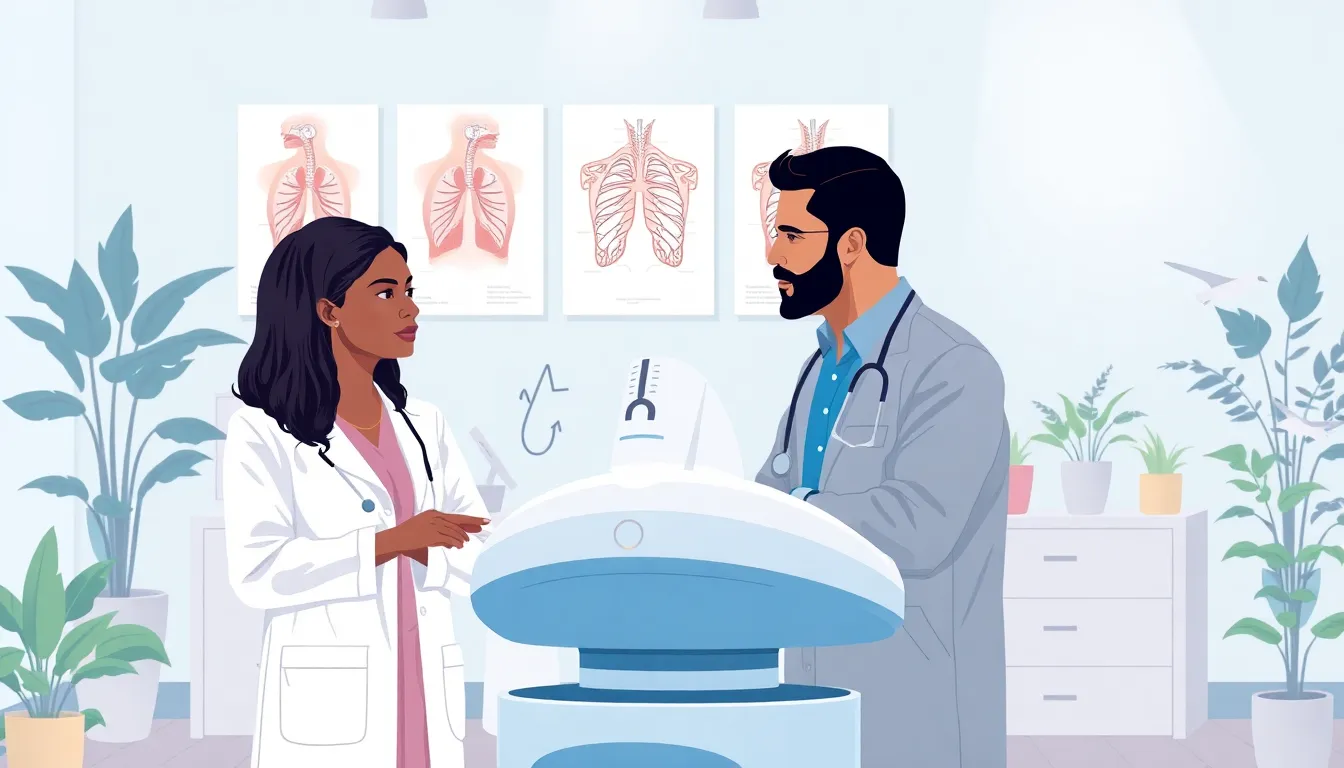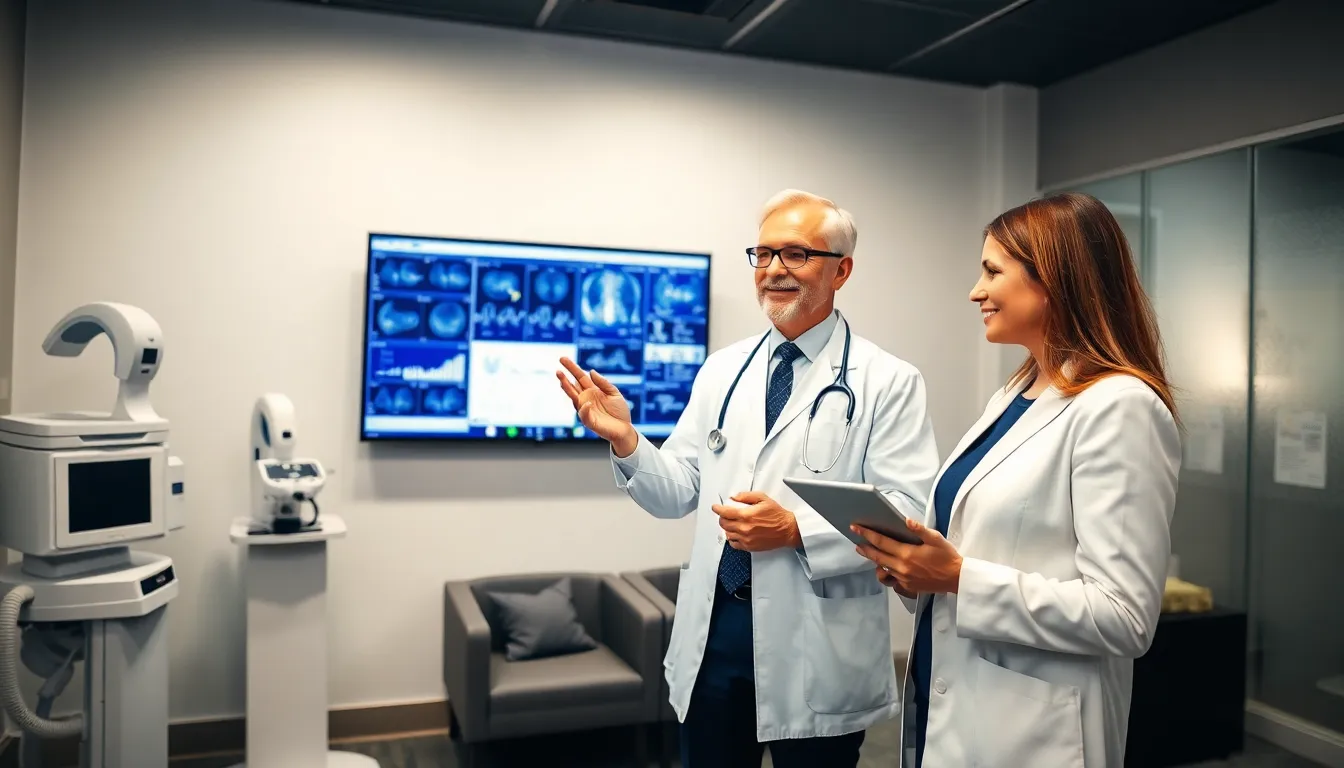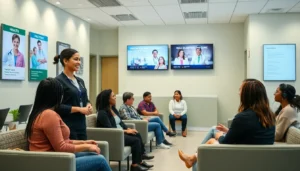Are you tired of waking up feeling like you’ve just fought a heavyweight championship? Sleep apnea might be the hidden culprit behind your sleepless nights. Don’t worry, you’re not alone in this. Millions face similar struggles, and understanding sleep apnea is the first step toward reclaiming those restful nights. In this text, we’ll guide you through everything you need to know about sleep apnea centers, from diagnosis to treatment options that can lead you back to dreamland.
Table of Contents
ToggleUnderstanding Sleep Apnea

Sleep apnea is a serious disorder characterized by repeated interruptions in breathing during sleep. This disruption often leads to poor sleep quality and a host of health issues. The three main types of sleep apnea include:
Types of Sleep Apnea
- Obstructive Sleep Apnea (OSA): The most common form, this occurs when throat muscles relax excessively during sleep, blocking the airway.
- Central Sleep Apnea (CSA): Less common, CSA happens when the brain fails to send the proper signals to the muscles that control breathing.
- Complex Sleep Apnea Syndrome: This is a combination of OSA and CSA, indicating that multiple factors might be involved.
Symptoms and Risk Factors
Some classic symptoms include loud snoring, daytime sleepiness, and morning headaches. Risk factors often include obesity, age, and family history. If left untreated, sleep apnea could result in serious conditions such as heart disease, high blood pressure, and diabetes. Identifying the signs early can greatly improve one’s quality of life.
The Importance of Diagnosis
Getting a proper diagnosis at a sleep apnea center is critical for effective treatment. A specialized center can provide the right tools and expertise required to assess each individual case thoroughly.
Diagnostic Procedures at a Sleep Apnea Center
Common diagnostic procedures include physical exams, medical history evaluations, and diagnostic tests. A healthcare provider might check for signs of sleep apnea and other underlying medical conditions that could exacerbate the issue.
Sleep Studies Explained
Sleep studies, also known as polysomnography, are essential. These tests monitor your sleep patterns, breathing, heart rate, and oxygen levels throughout the night. They can either be conducted in a sleep lab or at home, thanks to advancements in telemedicine. This data is crucial in forming a complete picture of one’s sleeping state.
Interpreting Your Results
Once the tests are completed, interpreting the results is the next step.
Treatment Options for Sleep Apnea
Treatment options often vary based on the type and severity of apnea, which can include lifestyle changes or medical treatments. Continuous Positive Airway Pressure (CPAP) machines are a popular first-line treatment.
Lifestyle Changes and Home Remedies
Small adjustments can make a significant difference. Losing weight, quitting smoking, and avoiding alcohol can help mitigate symptoms. Sleep positions also play a role: sleeping on your side may provide relief for OSA.
Medical Treatments and Devices
Beyond lifestyle changes, several medical devices, including CPAP machines and oral appliances, can help keep airways open. In some cases, medications may also be prescribed.
Surgical Options for Severe Cases
For individuals with severe sleep apnea, surgery may become necessary. Options include:
- Uvulopalatopharyngoplasty (UPPP): This involves removing tissue from the throat to widen the airway.
- Genioglossus Advancement: A surgical procedure to reposition the tongue muscle.
- Maxillomandibular Advancement: A more complex procedure that involves repositioning the jaw.
Surgical treatment is usually considered when other options haven’t been effective, and it can lead to significant improvements in sleep quality.
How to Choose the Right Sleep Apnea Center
Finding the right sleep apnea center can be daunting, but several factors can guide your decision.
What to Look For in a Sleep Center
Look for accredited centers offering comprehensive assessments. Find out if the center has access to sleep specialists and other healthcare providers.



